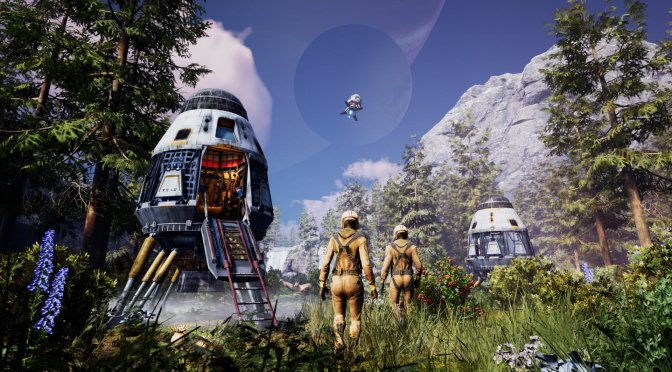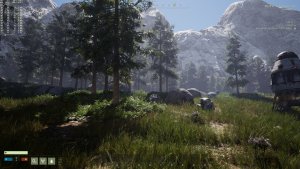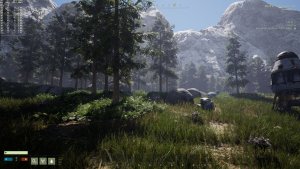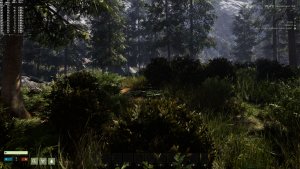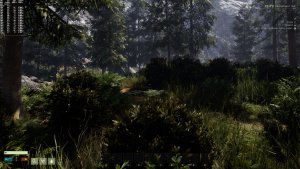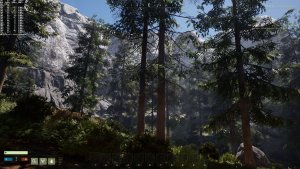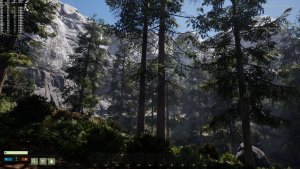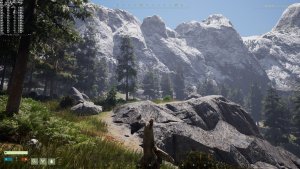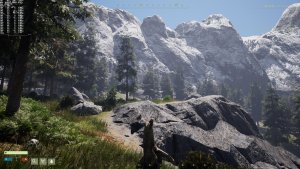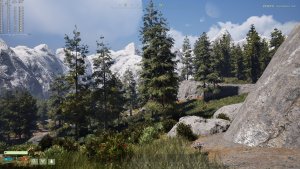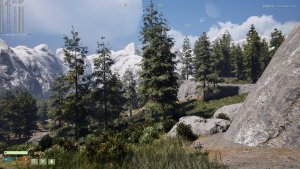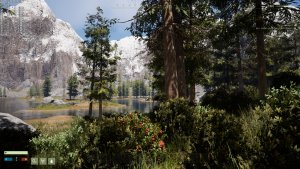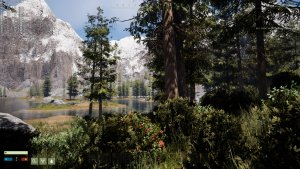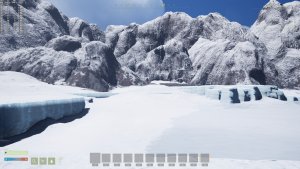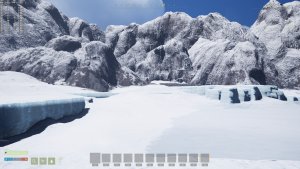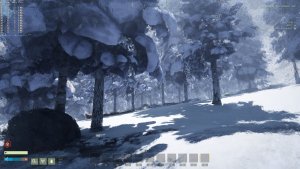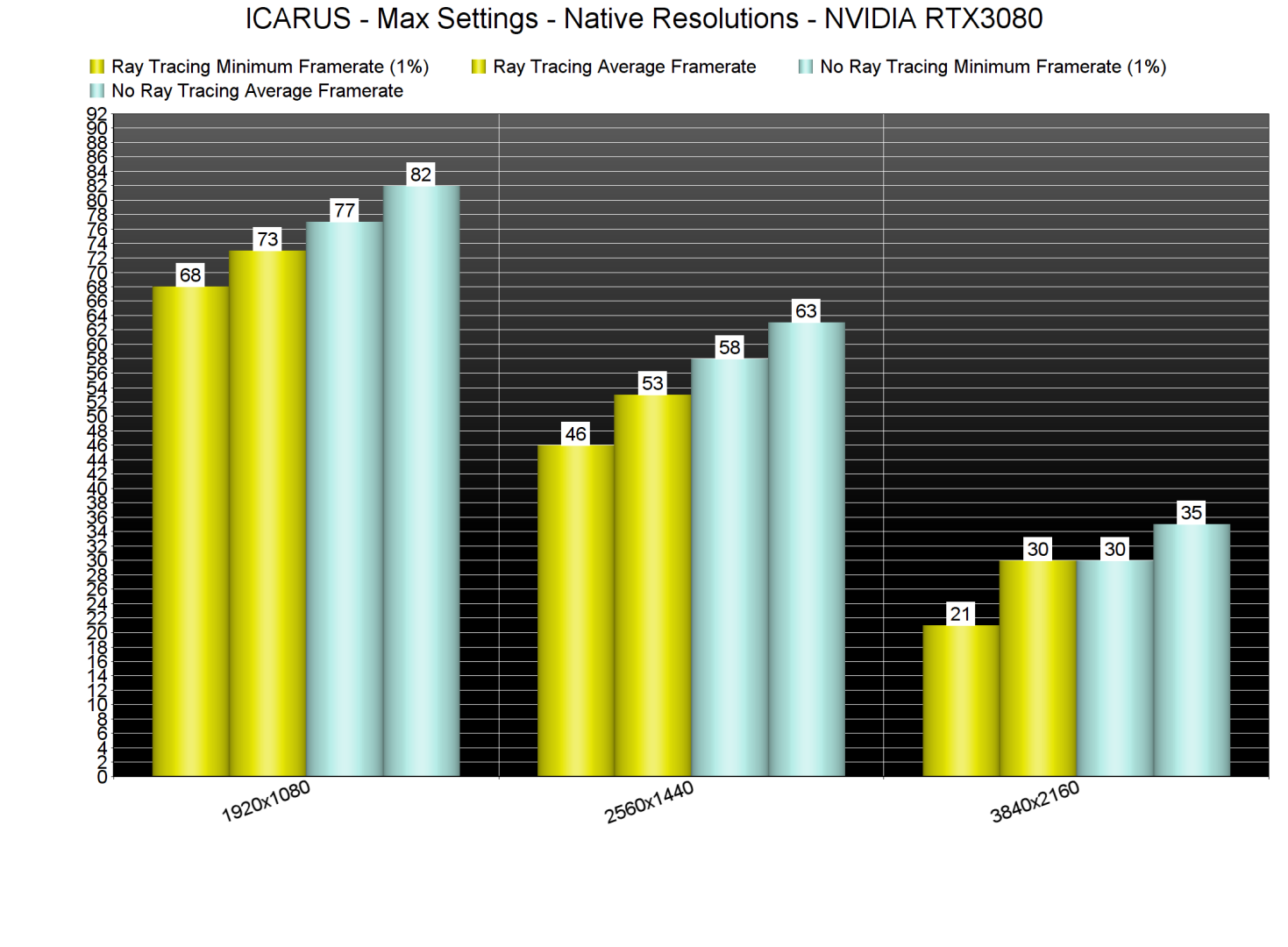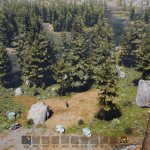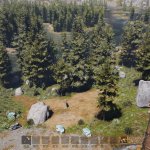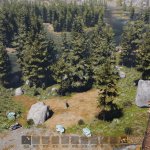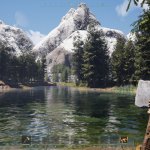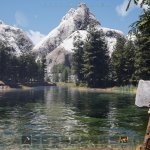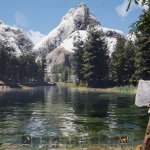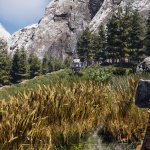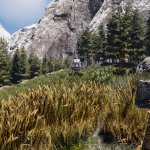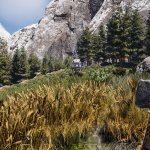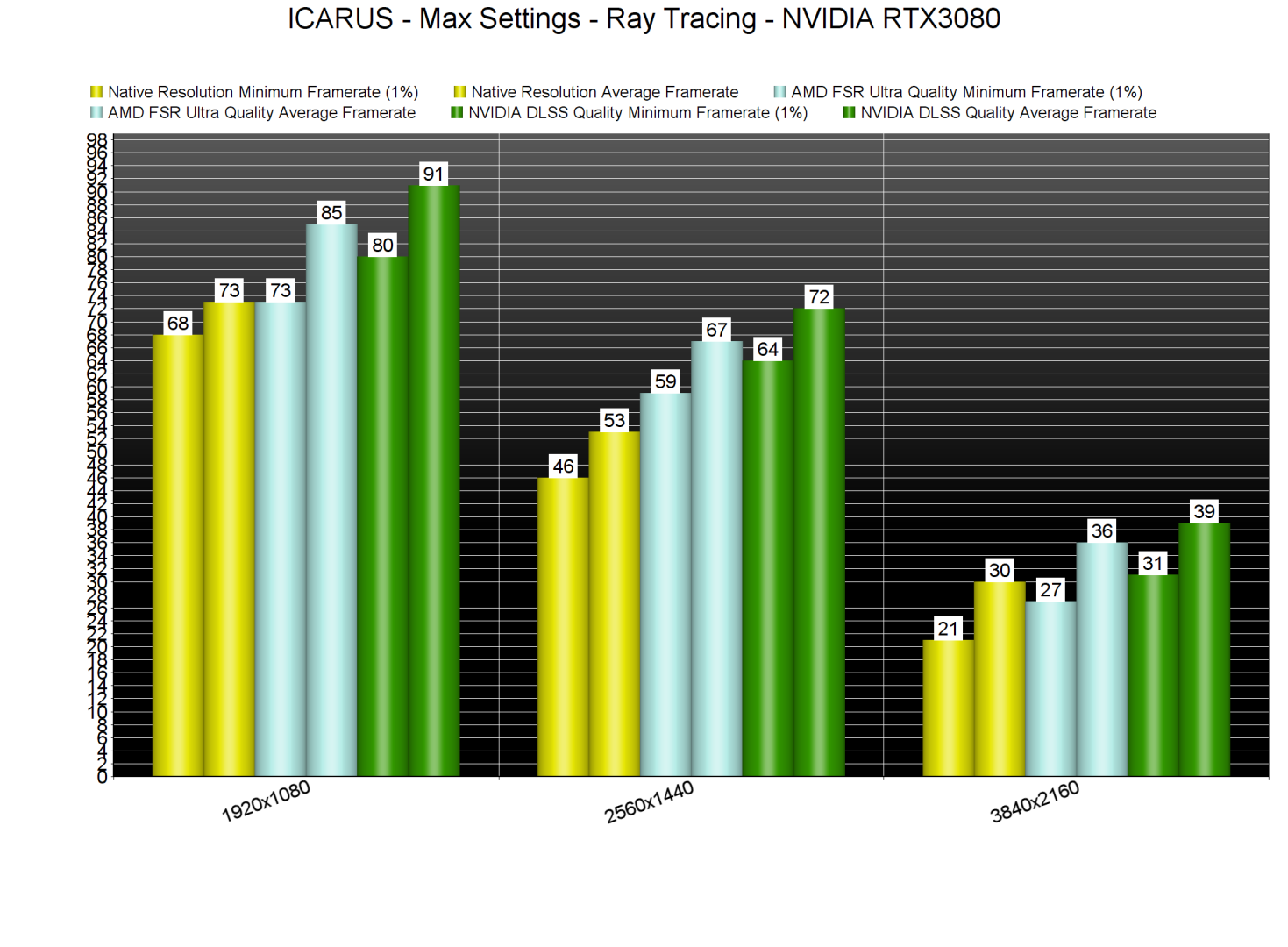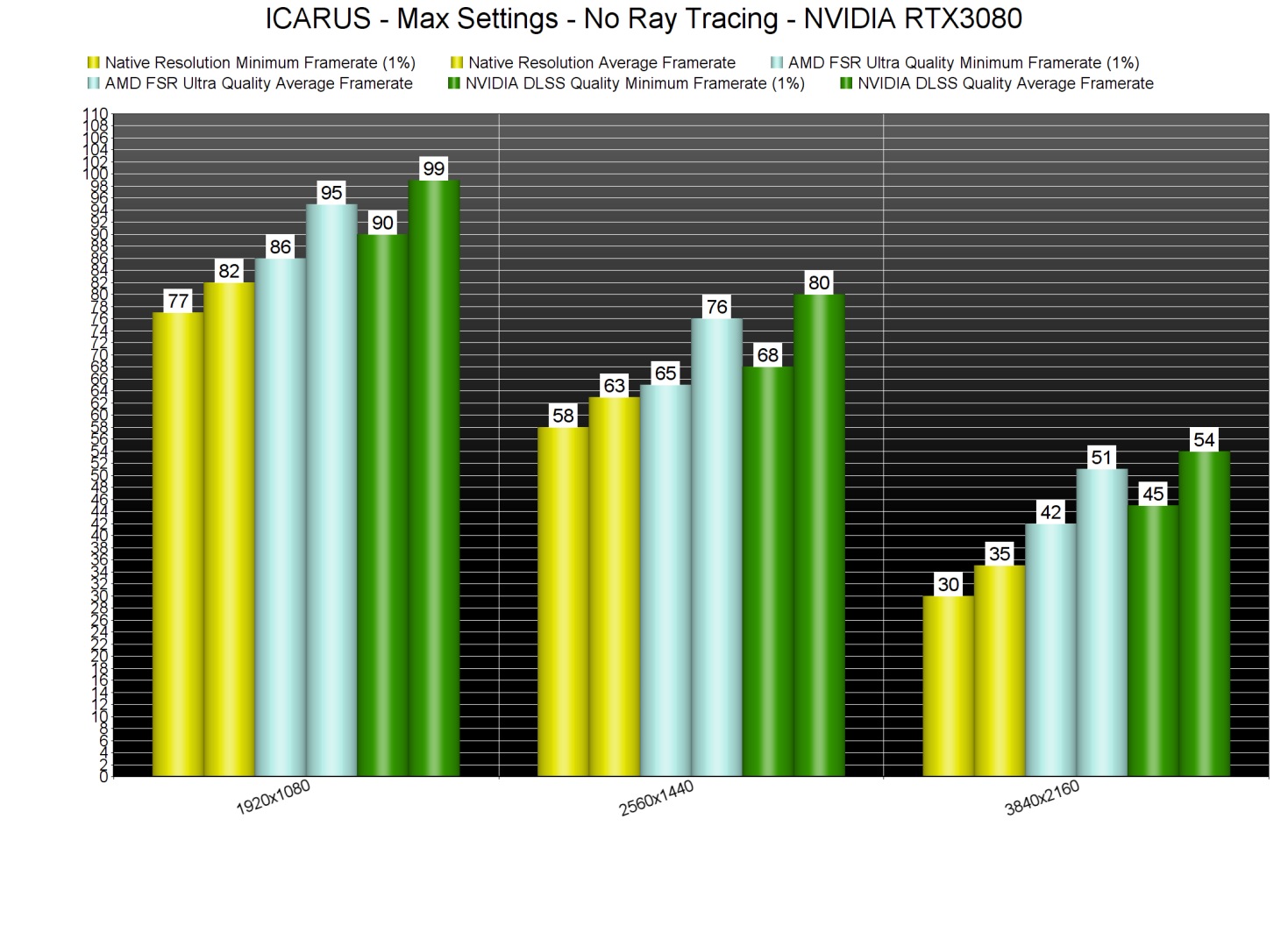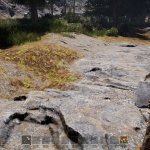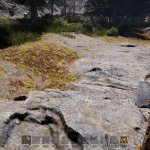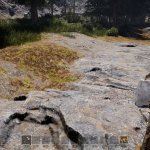RocketWerkz and Dean Hall have just released their session-based PvE survival game, ICARUS. ICARUS supports Ray Tracing Global Illumination, as well as NVIDIA’s DLSS and AMD’s FSR. As such, we’ve decided to benchmark them and share some comparison screenshots.
For these benchmarks, we used an Intel i9 9900K with 16GB of DDR4 at 3600Mhz and NVIDIA’s RTX 3080. We also used Windows 10 64-bit, the GeForce 497.09 driver.
ICARUS is the first game that supports a new RTXGI feature, called Infinite Scrolling Volumes. RTXGI Infinite Scrolling Volumes uses ray tracing to constantly update the Global Illumination lighting volume around the player as they move through Icarus’ world.
Below you can find some comparison screenshots between RT On (left) and RT Off (right). Pay attention to the light that bounces on the objects, especially on trees. You can easily notice this in most comparisons. However, there are occasions in which there is only a tiny difference (like in the snowy area).
Now the good news here is that these Ray Tracing effects are not that demanding. For instance, the performance difference between them at both 1080p and 1440p is only 10fps. Still, and even without its Ray Tracing effects, ICARUS is one of the most demanding PC games we’ve seen to date.
Our NVIDIA GeForce RTX3080 was only able to push a constant 60fps experience at native1080p. At 1440p, and even without the Ray Tracing effects, there were some drops to 58fps. Thankfully, those with G-Sync/FreeSync monitors will be able to enjoy the game, even when the framerate drops to 55fps.
As said, ICARUS supports NVIDIA’s DLSS and AMD’s FSR techs. Below you can find some comparison screenshots. Native 4K is on the left, DLSS is in the middle and FSR is on the right. DLSS looks better than FSR and native 4K when it comes to eliminating aliasing. DLSS also runs slightly better than FSR. What’s also awesome here is that both DLSS and FSR come with a Sharpening filter, meaning that you can adjust the sharpening to your liking. As such, you can get crisper visuals (than native 4K) with both DLSS and FSR.
Graphics-wise, ICARUS looks amazing in still images. However, the game suffers from MAJOR pop-in issues. Not only that, but you will see animals spawning right next to you, and stones transforming to plants when you get close to them. And then there are the awful artifacts from screen-space reflections. ICARUS is a buggy mess right now. The fact that this is NOT an Early Access game, but a full release makes things even worse. ICARUS can be as buggy as Cyberpunk 2077 or GTA The Trilogy – The Definitive Edition.
PC gamers can eliminate some of the game’s pop-in issues by following this guide. We’ve tested and yes, it works. However, there are still some annoying tessellation and shadow pop-ins. Not only that, but distant textures look noticeably worse in lower resolutions. Below you can find a comparison between native 1080p, 1440p and 4K. As you can clearly see, the distant textures in the 4K image look noticeably sharper than the 1080p image. Hell, even at 1440p you can notice the blurry textures.
My guess is that the game has tied both tessellation and mipmaps to its internal resolution, something that can negatively affect the whole image when running at lower resolutions (even when you’ve set Tessellation/Draw Distance/Textures to Epic).
All in all, ICARUS suffers from numerous technical issues. This is one of the most demanding games on PC, even without its Ray Tracing effects. And while in still images the game looks great, everything falls apart once you start moving. Additionally, the game suffers from some truly awful stuttering issues. At least the game’s RT effects are not that demanding. Furthermore, both the DLSS and FSR implementations appear to be great. For RTX owners, we highly recommend using DLSS. As for all other players, you can at least give FSR a go!

John is the founder and Editor in Chief at DSOGaming. He is a PC gaming fan and highly supports the modding and indie communities. Before creating DSOGaming, John worked on numerous gaming websites. While he is a die-hard PC gamer, his gaming roots can be found on consoles. John loved – and still does – the 16-bit consoles, and considers SNES to be one of the best consoles. Still, the PC platform won him over consoles. That was mainly due to 3DFX and its iconic dedicated 3D accelerator graphics card, Voodoo 2. John has also written a higher degree thesis on the “The Evolution of PC graphics cards.”
Contact: Email

